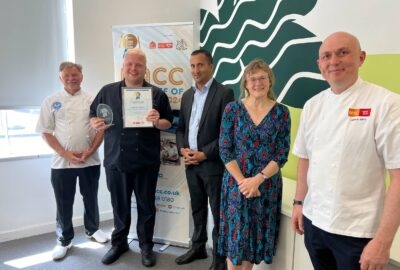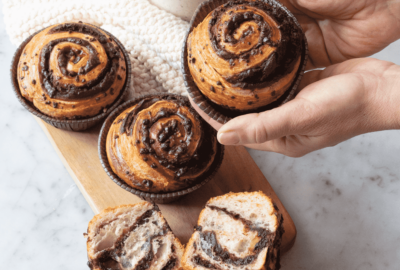Tim Pethick is the founder and chief zerologist at Zero Zilch Zip, a specialist importer, distributor and retailer of a curated range of non-alcoholic drinks.
WHAT DRINKS SHOULD BE FEATURED ON A LOW AND NON-ALCOHOL MENU?
While some drinkers are sober for religious or health reasons and research suggests about 25% of Gen Z don’t drink alcohol at all, the biggest market is moderators – those people who are cutting back their alcohol consumption either regularly or occasionally. Traditionally, drinkers are split roughly into thirds (beer, wine and spirits), although wine has a slight edge over the other two. It isn’t quite the same in the non-alcoholic space yet. Non-alcoholic beers are about 75% of the market, but this is changing.
I would include a few beer choices, some wines and a spirit. Customers choosing a low or non-alcoholic drink might
equally be consuming alcohol on another night, but either way, they don’t want to feel different from any other customer. So, it’s best to include low and non-alcoholic selections in the one menu. Of course, if that isn’t possible, the fallback is to have a separate low and non-alcoholic menu.
HOW CAN OPERATORS IMPROVE THEIR PROFIT MARGINS WITH NON-ALCOHOLIC DRINKS?
Many people are drinking non-alcoholic beer because it is all that is available at many venues. This limits the revenue opportunity – they might spend £4.50 on a beer but would otherwise have spent £9 on a glass of non-alcoholic wine or £20 on a bottle.
Don’t just carry a single supermarket-available non-alcoholic beer. If a customer knows they can buy it for a £1 in a supermarket, they will feel cheated by having to pay £4.50 for it in a restaurant. Instead offer them a craft beer that isn’t as readily and cheaply available. Better yet, upsell them to a non-alcoholic wine or spirit.
ARE MOCKTAILS A GOOD IDEA?
Whether you call them mocktails or non-alcoholic cocktails, they are firm favourites with many drinkers. It can be tricky to stock a broad range of non-alcoholic options, so either use Ready-to-Drink (RTDs) pre-mixed drinks, often in cans or non-alcoholic wines as a base to create cocktails.
WHAT ARE YOUR SUGGESTIONS FOR NON-ALCOHOLIC WINES?
While de-alcoholised wines are improving, there is also a growing body of wine alternative products being produced. These drinks didn’t start life as wine but have been crafted, in a variety of different ways, to be non-alcoholic alternatives for a wine occasion. The best de-alcoholised wines will often cost more than alcoholic ones. This is because they are more expensive to produce. They start life as wines and then are de-alcoholised and rebuilt and are currently produced in small volumes. The price will come down when volumes increase, and they are more readily available.


